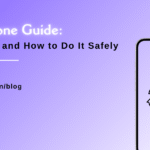
10 iPhone Battery Saving Tips You Need to Know

Table of Contents
In today’s digital age, our iPhones serve as indispensable tools for communication, productivity, and entertainment. However, one common concern that many iPhone users face is the limited battery life. Constantly having to recharge your device can be inconvenient, especially when you’re on the go. Fortunately, there are several strategies you can employ to extend your iphone battery saving tips and minimize the need for frequent charging. In this article, we’ll explore 10 iPhone battery saving tips that you need to know to optimize the battery life of your device.
Adjust Screen Brightness:
One of the most effective ways to conserve battery life is by adjusting the screen brightness of your iPhone. By lowering the brightness level, you can significantly reduce the power consumption of the display. To adjust the brightness, simply swipe down from the top-right corner of the screen to access the Control Center and drag the brightness slider to the desired level.
Enable Low Power Mode:
iOS includes a feature called Low Power Mode, which helps extend battery life by reducing background activity and optimizing system performance. When enabled, Low Power Mode temporarily disables certain features such as mail fetch, background app refresh, and visual effects. To activate Low Power Mode, go to Settings > Battery and toggle on the Low Power Mode option.
Manage Background App Refresh:
Background App Refresh allows apps to update content in the background, even when you’re not actively using them. While this feature can be convenient, it can also drain your iPhone’s battery. To conserve battery life, consider disabling Background App Refresh for apps that you don’t use frequently. Navigate to Settings > General > Background App Refresh to manage app refresh settings.
Limit Location Services:
Location Services enable apps to access your device’s location information, which can consume battery power, especially when used extensively. To conserve battery life, review the location settings for individual apps and disable Location Services for apps that don’t require location data. You can customize location settings by going to Settings > Privacy > Location Services.
Disable Push Notifications:
Push notifications can be a significant drain on your iphone battery saving tips, especially if you receive notifications from multiple apps throughout the day. Consider disabling push notifications for apps that you don’t consider essential. To manage notifications, go to Settings > Notifications and select the apps for which you want to disable notifications or adjust notification settings.
Optimize Auto-Lock Settings:
Auto-Lock controls how long your iPhone remains active before automatically locking the screen and entering sleep mode. By reducing the Auto-Lock time, you can conserve battery life by minimizing the amount of time the display remains on when not in use. To adjust Auto-Lock settings, go to Settings > Display & Brightness > Auto-Lock.
Disable Unnecessary Connectivity Features:
Features such as Wi-Fi, Bluetooth, and AirDrop can consume battery power when enabled, even if you’re not actively using them. To conserve battery life, consider disabling these connectivity features when they’re not needed. Swipe down from the top-right corner of the screen to access the Control Center and toggle off Wi-Fi, Bluetooth, and AirDrop as needed.
Use Wi-Fi Instead of Cellular Data:
When possible, connect to Wi-Fi networks instead of relying on cellular data. Using Wi-Fi for internet connectivity can be more energy-efficient than using cellular data, as it typically requires less power for data transmission. Additionally, Wi-Fi networks often provide faster and more stable internet connections, further enhancing the user experience.
Manage App Usage and Background Activity:
Monitor your app usage and identify apps that consume a significant amount of battery power. Close unnecessary apps running in the background and avoid keeping multiple apps open simultaneously. Additionally, periodically review your app settings to disable features or functionalities that you don’t use regularly.
Update iOS and Apps Regularly:
Apple frequently releases software updates that include performance improvements, bug fixes, and optimizations for battery life. Ensure that your iPhone is running the latest version of iOS by going to Settings > General > Software Update and installing any available updates. Similarly, regularly update your apps from the App Store to ensure compatibility with the latest iOS version and benefit from performance enhancements and battery optimizations.
Conclusion:
By implementing these 10 iPhone battery saving tips, you can effectively extend the battery life of your device and reduce the need for frequent charging. Whether it’s adjusting settings, managing app usage, or optimizing connectivity features, there are various strategies you can employ to conserve battery power and maximize the usability of your iPhone. With a few simple adjustments and mindful usage habits, you can enjoy longer battery life and a more seamless mobile experience on your iPhone.
Recent Blogs

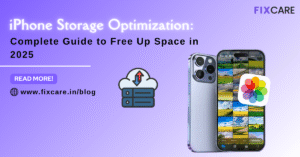
iPhone Storage Optimization: Complete Guide to Free Up Space in 2025

Fixcare Express Repair: Your One-Stop Solution for Urgent Apple Fixes

MacBook Speed Tricks: How to Make Your Mac Run Faster in Minutes
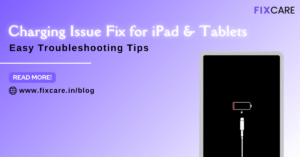
Charging Issue Fix for iPad and Tablets: Easy Troubleshooting Tips
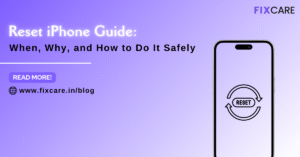
Reset iPhone Guide: When, Why, and How to Do It Safely

Cracked Screen? Here’s Why iPhone Glass Repair Is the Best Option
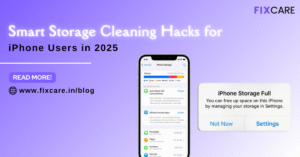
Smart Storage Cleaning Hacks for iPhone Users in 2025

Storage Cleaning Hacks for MacBook: Regain Space in Minutes

iPad Charging Port Repair: Troubleshooting Tips and Expert Fixes
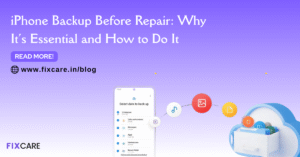
iPhone Backup Before Repair: Why It’s Essential and How to Do It

Top Signs You Need a MacBook Motherboard Repair Immediately
Get your Device Repaired Today
Recent News

Common Mistakes to Avoid During MacBook Keyboard Replacement

iPhone Storage Optimization: Complete Guide to Free Up Space in 2025

Fixcare Express Repair: Your One-Stop Solution for Urgent Apple Fixes

MacBook Speed Tricks: How to Make Your Mac Run Faster in Minutes
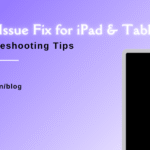
Charging Issue Fix for iPad and Tablets: Easy Troubleshooting Tips
